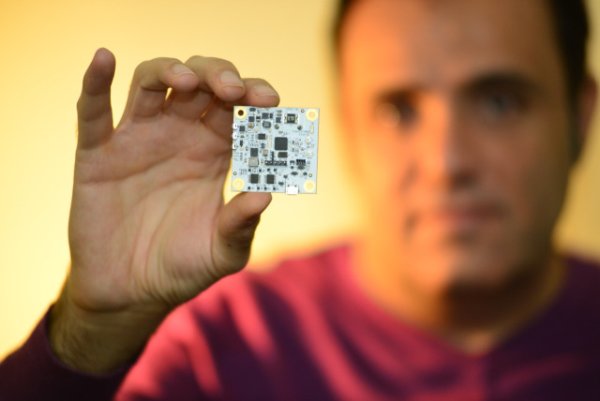That’s where Cota by Ossia comes in. The startup is the brainchild of physicist Hatem Zeine, who decided to focus on delivering wireless power in a way that was commercially viable, both for large-scale industrial applications and for consumer use. Zeine has been hard at work developing his wireless power technology and refining its delivery for over a decade now, and has built Ossia under wraps, managing to raise an impressive $3.2 million along the way while also keeping the startup almost completely invisible to the outside world.
Today, however, Zeine is ready to show what Ossia can do, and he’s presenting the first public demo of the Cota wireless charging prototype on-stage at Disrupt and revealing his company Ossia publicly for the first time. Despite the fact that no one’s heard of Ossia, the Cota prototype in its current form already managed to deliver power wirelessly to devices over distances of around 10 feet, delivering around 10 percent of the total original source power to recipient devices using the same unlicensed spectrum that powers Wi-Fi, Bluetooth, Zigbee and other wireless communication standards.
“I got fascinated by electromagnetic radiation, the way that light and optics and radio waves are the same thing,” Zeine said, explaining how he got interested in the subject while studying physics as a student. “And I got thinking about ‘what can you really do beyond this?’ there is something about the linearity of physics and the non-linearity of physics. most people are familiar with the linear version, which is the common sense version, where two apples are twice the weight of one, for instance.”
“In wave theory and electromagnetic systems, you don’t get linearities everywhere,” he added, describing the science behind Cota. “There are situations where double could mean for more, like double could mean square, or 3 plus 3 apples could result in a net total of 9 apples, so to speak. When you move from the linear version to the power version, things happen that were quite surprising.”
For more detail: Aims To Drive A Wireless Power About Charging

